Estimated reading time: 7 minutes
Don’t you just adore apples? They’re one of our favourite fruits, and we think they’re one of the best backyard fruit trees.
Apples have a special place in our hearts — not just in our orchard, but wherever we find them. That’s one of the reasons we love heading to Lutruwitra (Tasmania), the Apple Isle, especially in harvest season.
Learning about heritage apples
We’ve been to Tassie quite a few times, often to visit fellow organic orchardists and friends Matt and Coreen from Our Mates Farm.
Visiting Tassie (the Apple Isle) in apple season means being surrounded by apples, so we feel right at home.
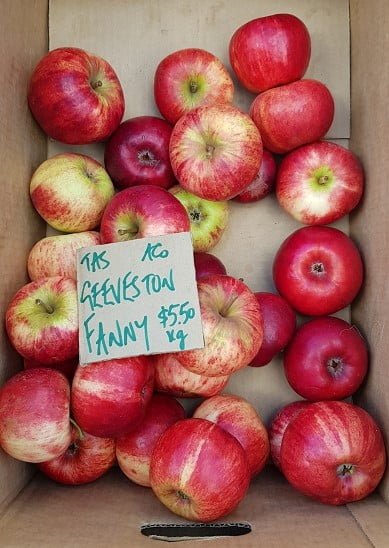
In particular, we always keep our eye out for locally grown, certified organic produce. We also look for opportunities to learn more about fruit wherever we go, and they inevitably seem to find us!
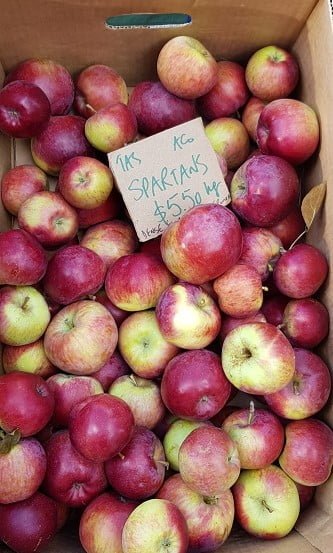
We’ve now visited the apple museum at Willie Smith’s Apple Shed in Grove numerous times. It’s a fascinating place that’s very important in the history of apple production, not only in Tasmania, but in Australia.
It’s probably a bit hard to read the poster (below) explaining the history of the museum (and research station that came before), but try clicking on it to enlarge it.

The history of apples in Australia
The apple museum is very close to the old Grove Research and Demonstration Station, which played an important role in apple R&D in Australia. These days, the museum is funded by local growers rather than the government.
It continues to house Australia’s biggest collection of heritage apple, quince, and pear trees. Depending on the season you visit, it’s well worth looking out for the amazing heritage apple display in the museum.
If you love fruit, it’s a fabulous place to visit – we can highly recommend it.

When is the apple season in Australia?
If you’re planning to visit, aim to go during the fruit season, when the apple display is full of real fruit. The earliest varieties start in February and the season goes right through until May.
It’s a fantastic opportunity to see some apple varieties that you’ll probably never see in the flesh anywhere else.
It might even inspire you to include some heritage varieties in your own garden.
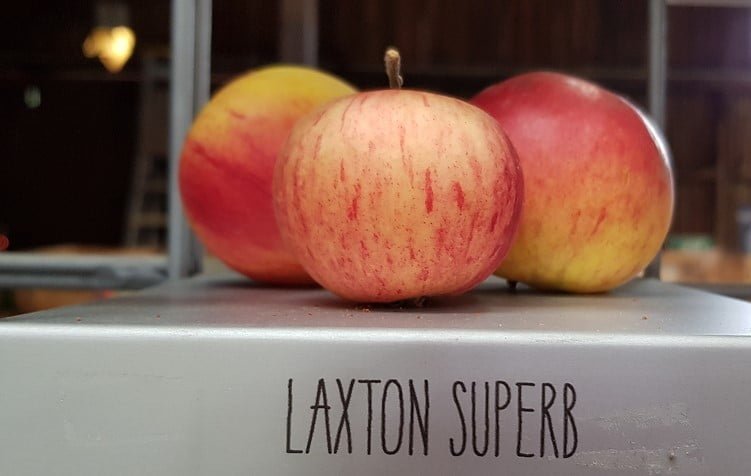
The museum has space for more than 390 different varieties of apples! Fresh specimens of the different varieties are put on display every season. It’s wonderful.
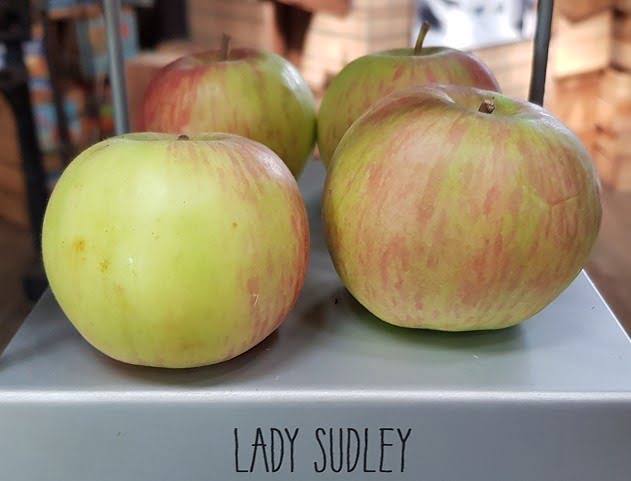
When we visited, we had to resist taking photos of ALL the varieties (it was tempting…).
We restricted ourselves to (a) the varieties we’ve planted in our heritage apple orchard, (b) varieties we’ve heard of but never seen before, and (c) varieties whose names were just too cute to leave out!
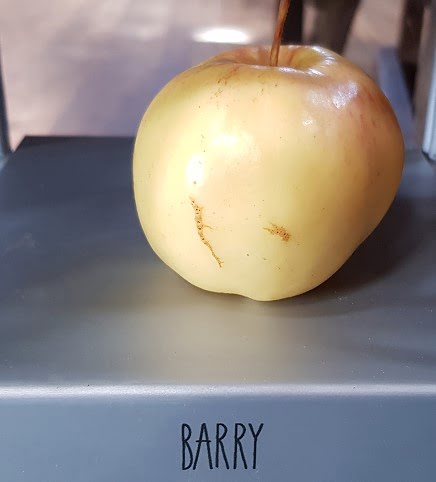
Honestly, you couldn’t make these names up!
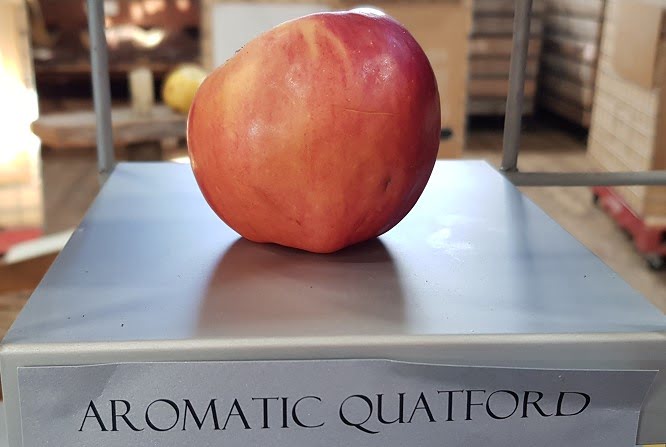
Preserving heritage varieties
Apart from being fun to look at (if you’re apple nerds, like us), the collection at Willie Smith’s is also an important reference collection.
One of the best ways to preserve these old heritage varieties is by bringing them back into fashion. That’s why we also grow and sell unusual varieties every winter through Carr’s Organic Fruit Tree Nursery.
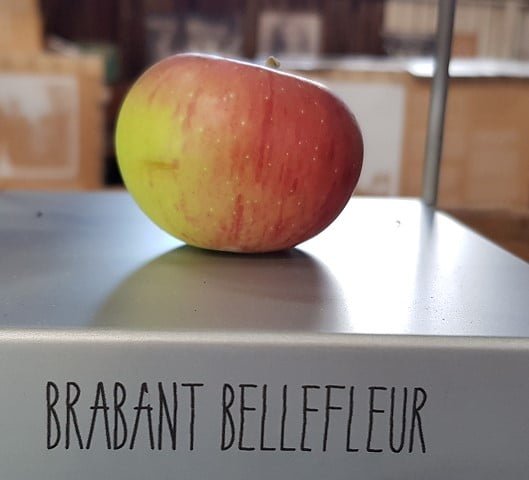
We grow some very unusual varieties you may not have heard of, like Roundway Magnum Bonum, Bess Pool, and Elstar. For many of them, we’ve never seen the fruit, let alone tasted it.
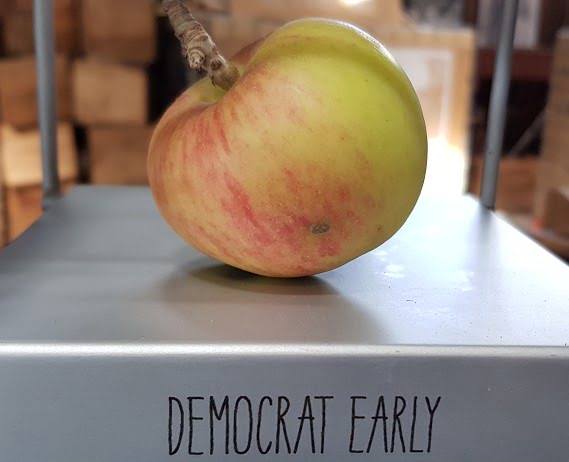
Quite a few of the varieties in the Grove museum are ones we’ve planted on the farm. We have a special little heritage orchard for the purpose. None of them is large enough to have fruit yet, which is why we love to see the actual fruit in the museum.
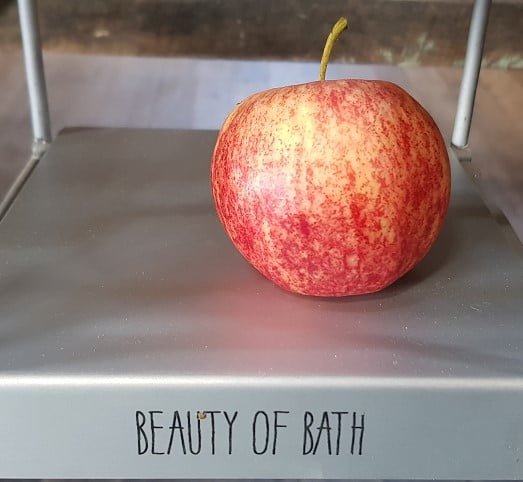
Our idea is to continue to expand our collection so that we can grow our own grafting wood to use in the nursery. We want to be able to produce a steady supply of these old heritage apple varieties that would otherwise potentially just disappear from view.
Why do we bother growing varieties that no-one’s ever heard of?
Because we think it’s important to preserve them if possible, and we reckon the best way to do that is to make it possible for everyone to plant one in their garden!
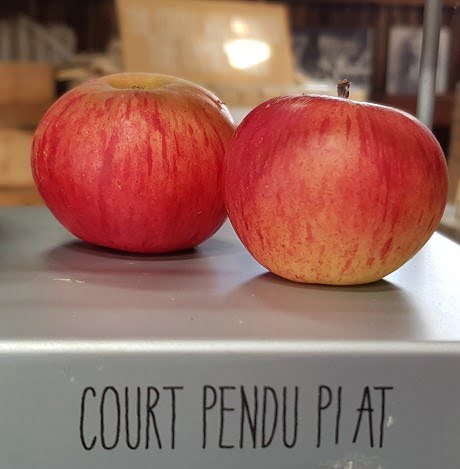
So far, we’ve managed to expand the collection of heritage apple trees for sale to more than 80 different varieties (though not every variety is available every year).
It’s been fun slowly expanding our collection, and we’re planning to keep going because 80 is still a long way from 390…
Related Articles
Warming winter cakes with home-grown fruit
Bake delicious warming winter cakes from the fruit you’ve grown on the fruit trees in your own garden for extra satisfaction.
How to grow your own multigraft or fruit salad tree
Multigraft trees are a no-brainer for many gardens, as they reduce risk and provide a bigger variety of fruit, without taking up more space.
Saving heritage fruit trees by planting them
Many heritage fruit tree varieties are in danger of going extinct. The best way to save them is by planting them in your backyard.

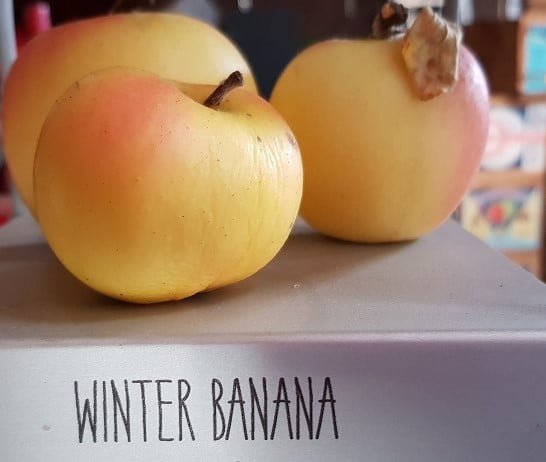

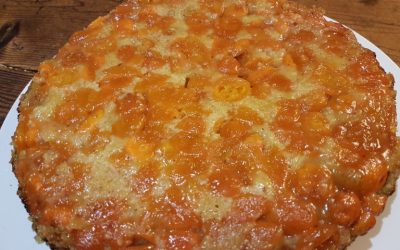
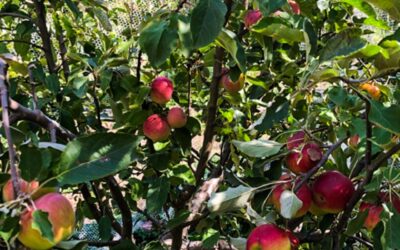
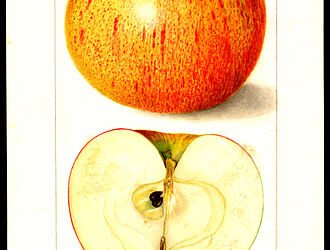


A Nice collection of photos of Heritage/ Heirloom Apples. Do all these varieties still exist?.
Hi Khushal, yes they do. These apples come from a collection in Tassie, where all these varieties are maintained as specimen trees, but there are several collections around Australia and the world. We’re starting a very small collection here on our farm as well, because grafting and selling the trees is one of the best ways to promote and preserve these old heritage varieties.
Where can you purchase scions for grafting? I’m in W.A. Thank you.
Hi Gemma, not sure sorry. Are you part of a local gardening group? It’s always best to get the scions from a local tree if possible, so maybe see if there’s a local group you can connect with via social media? There are a few online sources (e.g. The Lost Seed and Werribee Park Heritage Orchard) but they’re mostly on the east coast, so that’s a long way for your scions to travel!
Did you guys run across a variety called Full Monty when you were over there?
Hi Jon, there’s sooo many varieties, and in the US they really value all the heritage varieties so it’s seemingly unlimited. We didn’t hear of Full Monty though.
Hi Jon, sadly, no! Can you tell us anything about it?
We have a geevston fanny-excellent eating.
– an Alexander, we let it grow and grow, the smallest apple was 115 mm in diameter. We let them grow to long to make a valid Judgment about eating quality.
a Jim Reilly, good for preserving.
Hi Ronald, thanks for the info – it’s great to learn more about these less common varieties.
They all sound like fun names. Is the museum open all year round?
Also what varieties are suitable to grow in Brisbane? I need fairly small growing types or ones that can be espaliated.
Hi Jennifer, the museum is open pretty much all the time that Willie Smith’s apple shed (which is a restaurant/cafe/cidery) is open, so you’ve got a good chance of being able to see it if you visit. You need to look for low-chill varieties to have success with apples in your climate. We can recommend that you try Daleys nursery at Kyogle, they’ve got a pretty good range of fruit that might suit you.
We were also recently in Tassie, but couldn’t get into the apple museum at Willie Smith, ( just enjoyed the cider!) So many different varieties to try! Loved it! Loved seeing all the orchards ready to harvest.